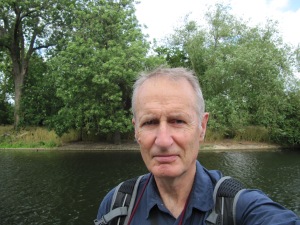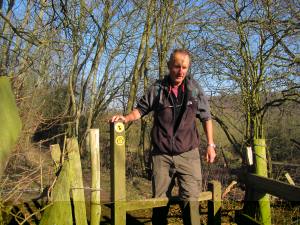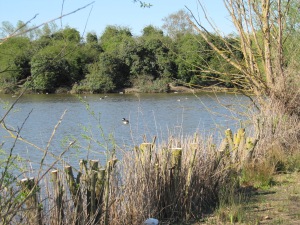
– All stations are all shown in bold type
– Numbers refer to the walks, e.g. no.4 is Parkland Walk.
(For numbered list of walks see Contents page.)
-Click on the number to get the page it is linked to, e.g. if you want to see some deer click on 2 or 4 etc, and a walk with deer comes up.
Abbey Mills Pumping Station 60,
Abbey Road 63,
Abridge 6,
AcelorMittal Orbit 60, 63, 64, 65,
Acid heathlands 3, 19, 59,
Robert Adam 28,
Akeman Road 51,
Albyns Lake 41,
Aldenham country park 33,
Alexandra Palace 4,
Alexandra Park 4, 7,
Allianz Park 68,
Alperton 23, 46,
Ambresbury banks 39,
Amersham 16,
Amersham Old Town 16,
Anglers 50,
Animal pens 14, 2,
Ant hills 20, 30,
Apsley marina 36,
Apsley monument 31,
Aquadrome 27,
Arcelor Mittal Orbit 60,
Arnos Grove 9, 47, 48,
Arsenal 52,
Art installation 56, 60, 63,
Ash dieback disease 45,
Asheridge valley 51,
Sir David Attenborough 37,
Avenue Park 61,
Aviaries 2, 14,
A.V.Roe 53,
Ballast Quay 59,
Ballinger Bottom 24,
Cecil Balmond 60,
Bandstand 18, 59,
Bardag Lake 50,
Barking Creek 60,
Barn Hill 62,
Barnes Bridge 34,
Barnes Common Nature Reserve 37,
Barnet Playing Fields 43,
Dame Henrietta Barnett 38,
Batchworth Lake 27,
Bathing ponds 14,
Battle of Barnet 3,
Battleground re-enactment 39,
Bazalgette, Sir Joseph 34, 37, 60, 63,
Beam engine 67,
Beam River Valley/Country Park/Parklands 49, 50,
Beckton 60,
Bell Common 39,
Bellingdon ridge 51,
Bellows Wood 24,
Belted Galloway cattle 53,
Bentley Priory 30,
Bernardo O’Higgins 26,
Beverley Brook 19, 26, 34, 37,
Beverley Meads Woods 37,
Big Wood 38,
Bird Keepers Cottage 31,
Bird watching 7, 15, 35,
Bishops Wood Country Park 29,
Bitterns 15,
Blackheath & Blackheath Vale 59,
Black Poplars 50,
Blackwall Cut 63,
Blackwall Tunnel 63,
Bluebells 24,
BMX 10,
Boat race 34,
Boating lake 2, 4,
Bomber Command memorial 31,
Queen Boudicca 39,
Bow 63,
Bow Backwaters 60, 63,
Bow Creek 60, 63,
Bow Creek Eco Park 63,
Braunston 36,
Brazil Mills Wood 61,
River Brent 28, 62,
Brent Lodge park 28,
Brent Reservoir 62,
Brent River Park walk 28,
Bridgewater monument 51,
Bromley-by-Bow 10,
Brook Farm Open Space 43,
‘Capability’ Brown 28, 57,
Broxbourne 15,
Brunel 28,
Brunswick Park Waterfall Walk 9,
Buckhurst Hill 17,
Buckingham Palace 31,
Bull Rush 50,
Bulls Bridge 46, 61,
Burtonhole Farm/Lane 48,
Bury Lake 27,
Butlers Retreat 25,
Butterflies 29, 35, 62,
Butterfly house 14,
Butterfly meadows 1, 57,
Buzzards 30, 51,
Cable cars 59,
Caesar’s Camp Fort 26, 37,
Caesar’s ponds 33,
Camden Lock 18,
Camelot Moat 57,
Camley Road Nature Reserve 18,
Canal 18,
Canary Wharf 59, 63,
Capital Ring 19, 26, 28, 42, 46, 60, 62,
Captain’s Wood nature reserve 51,
Carp 50,
Carr 42,
“The case is altered” Inn 30,
Cassiobury Park 36,
Cattle grids 25,
Causeway Watermeadows 61,
Ceps 29,
Chalara 45,
Chalk stream 8, 16,
Channelsea 60, 63,
Charlton 42,
Charlton Park 42,
Chase Nature Reserve 49, 50,
Chase Water 50,
Cherry Tree Woods 7,
Chesham 8, 11, 24, 51,
Chess Valley Walk 8,
Chigwell Church 13,
Chigwell Row Local Nature Reserve 13,
Chiltern Hills 8, 11, 24, 51,
Chilterns A.O.N.B. 27,
Chiltern Link path 24,
Chingford 25,
Chingford Plain 17, 25,
Chipping Ongar 54,
Chiswick Bridge 34,
Cholesbury Camp 11,
Chorleywood 27,
Church, old 54,
Cient lands 15,
Cinnabar moth 50,
City Island 63,
City of London 58,
City Mills River 60, 65,
Clapboard 13, 35, 54,
Claybury hall 56,
Claybury park 56,
Clissold Park 2,
Clive of India 31,
Clock Mill 63,
Coal post 29,
Cobbins Brook 35,
Cockfosters 1, 3, 12, 57,
Cody Dock 63,
Coldharbour (street) 63,
Coldharbour point 41,
Cole Park 61,
Colnbrook 20,
Colne Valley 27,
Colne Valley Way/Walk 20,
Commander Lightoller 28,
Community orchard 49,
Concrete barge graveyard 41,
Connaught water 17,
Conservation Volunteers 61,
Coopersale 54,
Copper Box 65,
Coppermill Tower 53,
Coppicing 19,
Copt Hall 35,
Copthall playing fields 68,
Court Leet 20,
Cowslips 24, 35,
Coy Carp Inn 27, 29,
Cranebank 61,
Crane Park Island 61,
Crane River Valley 61,
Cranford Park 61,
Crews Hill 12,
Croom Hill gate 59,
Crouch End Open Spaces 5,
Crouch Hill Park 4,
Cutty Sark 63,
Cutty Sark pub 59,
Dagenham 49,
Dagenham Corridor 50,
Dagenham East 49, 50,
Darlands Lake 47, 48,
Dartford bridge 41,
Debden 6,
Debden Green 39,
Deckchairs 31,
Deer 2, 4, 15,17, 19, 26, 30, 37, 39, 59,
Denham 29,
Diamond bridge 65,
Diana Princess of Wales Memorial Fountain 31,
Dinosaur sculptures 14,
Disused railway line 4, 68,
Docklands Light Railway (DLR) 59,
Dog-free walks 53,
Dollis Valley/Brook/Hill 38, 43, 47, 48,
Domesday Book 4,
Donkey Wood 61,
Dracula 41,
Ducketts Common 5,
Duckpond 48,
Dukes Hollow Nature Reserve 34,
Eagle Pond 21, 25,
Ealing Broadway 28, 61,
Earthworks 4, 11, 39, 51,
East Barnet Village 9,
East India Dock Basin 63,
Eastbrookend Country Park 49, 50,
East Finchley 7,
Ecology centre (Islington) 52,
Ecology Park (Greenwich) 42,
Eel Pie Island 40,
Elstree 33,
Enfield Chase 12,
Engine House (Walthamstow Wetlands) 53,
Epping 35, 54,
Epping Forest 17, 21, 25, 39,
Epping Long Green 35,
Epping Thicks 39,
Essex 6,17, 35, 54,
The Essex Way 54,
Estuary 41,
Fairlop 56,
Fairway 68,
Falconwood 42,
20 Fenchurch Street 58,
Fens 41,
Filter beds 10, 67,
Finsbury Park 4, 52, 55,
Finsbury Park 2, 4,
Fish Island 60, 65,
Fishers Green 15,
The Fishery 33,
Fitzherbert walk 28,
Flint 16, 24,
Flood control 49,
Folly Brook 47, 48,
Footballer caterpillars 50,
Forest Gate pub 35,
Forest Way 35,
Forestry Commission 45,
Forman’s Salmon Smokehouse 60,
Friends bridge 67,
Frog pool 7,
Fryent Country Park 62,
Fungi 17, 54,
Furze heath 30,
River Gade 36,
Gernon Bushes 54,
Giant Hogweed 47, 48,
W.S.Gilbert 30,
Gillespie, landscape architect 58,
Gillespie Road Park and Local Nature Reserve, Islington 52,
Gipsy tombstone 25,
Goat-man 4,
Golders Green 14, 38,
Golders Hill Park 14,
Golf 59, 68,
Gormley, Anthony 42,
Gotfords Hill 62,
Graffiti 10, 18, 60, 65,
Granary Square 18,
Grand Union Canal 18, 23, 27, 28, 29, 36, 46, 51, 61, 62,
Grange Hill 13,
Grass snake 54,
Gravel pits 27,
Graveyard (disused) 5,
Grazing rights 25
Great British garden 65,
Great Western Railway 28,
Green belt 48,
Green bridge 64,
Green Chain Walk 42,
Green Park 31,
Greenford Broadway 28,
Greensted-juxta-Ongar 54,
Greenway 60,
Greenway Orchard 60,
Greenways 5, 7,
Greenwich North Station 59, 42,
Greenwich Park 59,
Greenwich Peninsula 42, 59, 63,
Grim’s Ditch 30,
Grim’s Dyke 30,
Gunpowder magazine 41, 61,
Gym, outdoor 56,
Hackney marshes 10, 65, 67,
Hackney Wick 60, 63, 64, 65, 67,
Hackney Wick Community Woodland 10, 67,
Hadley Common 3,
Hadley Highstone 3,
Hadley Manor Open Space 3,
Hadley Road 57,
Hainault 13,
Hainault Forest Country Park 13,
Hampden pond 24,
Hampstead Garden Suburb 38,
Hampstead Heath 14,
Hampstead Heath Extension 38,
Hampstead Ponds14,
Hampton Court 40,
Hampton Court Palace 40,
Hanger Lane 28,
Hanwell locks 28,
Harlington & Hayes town 46,
Harold Court Wood 45,
Harold Wood station 45,
Harrow 30,
Harrow on the Hill 32,
Harrow Weald Common 30,
Hatch End 32,
Havering Ingrebourne Way 41, 45,
Hawridge 11, 51,
Hay 43,
Hayes & Harlington station 46, 61,
Hayfields 28,
Hazards 61,
Headstone Lane 30,
Heathland 19,
Heathrow 20,
Hedge corridors 64,
Hemel Hempstead 36,
King Henry VIII 40,
Herberts Hole 24,
Herons 28,
Hertford 15,
Hertford Union canal 64, 65.
Hides 67,
Highams park lake 25,
High Beach/Beech 17,
Highgate 5,
Highgate Ponds 14,
Highgate Woods 4, 7,
Highwaymen 42, 59,
Highwood Hill 47,
Hillingdon Trail 29, 61,
Holecombe Dale 47,
Hollow Pond 21,
Holmer Green 16,
Honeysuckle 27,
Hooks Hall Lake 50,
Hornchurch Country Park 41,
Hornfair Park 42,
Hornsey Church tower 5,
Hornsey Water Works 7,
Horsendon Hill 46,
Horses 57,
Horse-drawn barges 64,
Horseshoe bridge 67,
Horton 20,
Hospital Hill 56,
‘Hotlips’ bridge 67,
Hounslow Heath 61,
House boats 23,
House Mill 63,
HS2 23,
Hugh Myddleton 7,
Gary Hume 59,
Hundred Aker Wood 33,
Hyde Park 31,
Hyde Park Corner 31,
Ingrebourne Marshes, River, Valley, Way, 41, 45,
Iron Bridge 60,
Isabella Plantation 26,
Island gardens 63,
Isle of Dogs 59, 63,
Isleworth 28, 44,
Isleworth Ait 28,
Italian Gardens 31,
Iver 20,
Ivinghoe beacon 51,
Ivy Chimneys 39,
Jack’s Hill 39,
Jack’s pond 3,
Jack Straws Castle 14,
Japanese Water Garden 57,
Jenner, Edward 31,
Jessop, William 28,
Jubilee Greenway 60, 63,
King James I 37,
Sir Anish Kapoor 60,
Kestrels 28,
Kew Gardens 44,
Kensal Rise cemetery 23,
Kensington Gardens 31,
Kensington Palace 31,
Kenwood House 14,
Kew Bridge Station 34, 44,
King, Stephen 4,
Kings Cross Station 18,
King’s Observatory 44,
Kingston upon Thames 40,
Kitchen garden 14,
Kites 14, 51,
Kneller Gardens 61,
Kosher food 38,
Lake 12, 13, 41, 57,
Lammas land 15,
Lancaster Gate 31,
Landfill 41,
Landscape architecture 58,
Latimer House 8,
Latimer Village Green 8,
Leamouth 63,
LeaWay South 63,
Lee Valley Regional Park 15, 10, 53, 67,
Leg O’ Mutton reservoir 34,
Levée 49,
Lewisham DLR station 59,
Leyton Flats 21,
Lighthouse 59, 63,
Lime trees 57,
Limehouse Basin 63,
Limehouse Cut 63,
Lippitts Hill 17,
Little Venice 23,
Little Wood 38,
Llamas 11, 51,
Lock gates 10, 27, 28, 36,
Lodge Farm 35,
The Log Cabin 21,
Log Church 54,
London Apprentice inn 28,
London Loop 29, 32, 33, 41, 43, 45, 57, 61,
London marathon 59,
London Museum of Water and Steam 44,
“London View” (Stanmore) 30,
London Walkers Forum 29,
London Wetland Centre 34,
London Zoo 18,
Londonist, blogger 63,
Long boats 23,
Longplayer project 63,
Long Wall Path 60, 63,
Long Water 31,
Lords Bushes 17,
Lowland pastoral landscape 43,
Lowndes Park 24, 51,
Sir Edwyn Lutyens 38,
Lye Green 11,
Edward Bulwer Lytton 32,
Managed wilderness, Islington, 52,
Manor House 2, 55,
Manor Park station 22,
Market 34, 37,
Market Hall 16,
Markfield Park 10, 67,
Marshes 15, 67,
Maryon Park 42,
Maryon-Wilson Park 42,
Matilde, Queen 63,
Meades Water Gardens 8,
Meadow Pippit 23,
Meanwhile Park 23,
Mereway Nature Park 61,
Prime Meridian 59,
Merryhills Brook 57,
Merryhills Way 57,
Middlesex Filter Beds 10, 67,
Migrating birds 41, 50,
Mile End Park 63, 64,
Mile End station 64,
Mill Hill East station 68,
Mill Hill Old Railway 68,
Millenium Dome 42, 59, 63,
Millennium Wharf 63,
Mill Hill 47, 48,
Millhill Viaduct 38,
Mill Meads 60,
Millwall Docks 63,
John Milton’s house 20,
Misbourne, River 16,
Moat Mount Local Nature Reserve 43,
Model Boating Pond 14,
Monken Hadley Common 3,
Monument 58,
Henry Moore 59,
Moor Mead Park 61,
Moormasters 20
Moor Park 29, 32,
Mortlake 34,
Motte and Bailey 54,
Muntjac 6, 15,
Murals 10,
Narrow Boats 27, 28, 29, 36, 63, 67,
National Maritime Museum 59, 63,
Nature Reserves 2, 4, 5, 52,
Nescafe factory 61,
Nettles 35,
New Malden 37,
New River 2, 5, 7, 55,
New River Path 2, 55,
Jack Nicholson 33,
Nightingales 15,
North Greenwich 42,
North Marsh 53,
North Pole 33,
Northern heights 47, 48,
Northern Outlet Sewage Embankment (NOSE) 60, 63,
Nude sun-bathing 14,
O2 Arena 42, 59, 63,
Oakhill Park 9,
The Oak Trail 39,
Oakwood 1, 9, 57,
Obelisk 12, 57,
Old Deer Park 44, 61,
Old Ford Lock 60,
Old Shire Lane 27,
Olympic Park 10, 60, 65,
Ongar 54,
Orbit, Arcelor Mittal 60, 63, 65,
Orchard, Plaistow 60,
Orchard, vintage 56,
Ostrich Farm 27,
Ostrich Inn 20,
Oxford v. Cambridge boat race 34,
Oxhey Woods Nature Reserve 32,
Oxleas Woods 42,
Paddington canal 23,
Paddington station 61,
The Paddock nature reserve 53,
Pages Wood 45,
Palewell Common 37,
Parkland Walk 4, 68,
Parliament Hill 14,
Pavilion cafe 31, 59,
Peasants revolt 59,
Pen Ponds 26,
Peregrine falcon 53,
Peter Pan statue 31,
Petersham Common 26,
Petersham Meadows 26,
Philipshill Wood 27,
Philosophers garden 5,
Pilgrims ferry 41,
Pill box 49, 35, 41
Pinnerwood House 32,
Pits 59,
Pitshanger park 28,
Plaistow 60,
Plane trees 34,
Planetarium 59,
Plumstead 60,
Pollution levels 34, 61,
Ponds 14,
Preston Road 62,
Primrose Hill 18,
Priory Park 5,
Pubs 17,
Purfleet 41,
Putney Common 19,
Putney Bridge 34, 37,
Pymme’s Brook 9,
Queen Elizabeth Hunting Lodge 17, 25,
Queen Elizabeth II Olympic Park 60, 65,
Queen Matilde 63,
Queens Orchard, Greenwich 59,
Queen’s Wood Local Nature Reserve 5, 7,
Rabbits 11, 35, 49,
Radial lock gates 65,
Railway Fields Nature Reserve 2,
Railway line (disused) 4, 52,
Raingarden
Rainham 41,
Rainham Marshes 41
Ramsar 53,
Ramsons 24,
Redbridge 22,
Red Kites 8, 11,
Reed beds 41,
Reed Mace 50,
Regents Canal 18, 63, 64,
Regents Park 18,
Regents Park Mosque 18,
Regents Park Station 18,
Repton, Humphrey 56, 57,
Reservoirs 15, 53, 55,
Richmond 19, 26, 28, 40, 44, 61,
Richmond Bridge 28,
Richmond Deer Park 19, 26,37,
Richmond Lock and Weir 28, 44, 61,
Rickmansworth 8, 27,
Ridgeway (National Trail) footpath 24, 51,
Ridgeway (south London) 60,
River Ash 20,
River Brent 28, 62,
River Chess 8,
River Ching 17, 25,
City Mills River 60, 65,
River Colne 20,
River Crane 61,
River Ingrebourne 41, 45,
River Lea or Lee 10, 15, 53, 60, 63, 64, 65, 67,
River Longford 20,
River Misbourne 16,
River Roding 6, 22,
River Rom 50,
River Thames 19, 26, 28, 40, 42, 44, 59, 60, 61, 63,
Waterworks River 60, 65,
Riverside cafe 20,
Riverside gardens 63,
Riverside Walkway 63,
Roach 16,
Romans 39,
Ropemakers Fields 63,
Rose garden 18, 31,
Roundhill wood , 51
Round Pond 31,
Royal Observatory 59,
Royal Mint 6,
Royal Parade, Blackheath 59,
Royal Park 19, 31, 37,
RSPB 41,
Rushmere Pond 26,
Rye House 15,
Saltmarsh 63,
Sassoon family 57,
Saunders Ness 63,
Saxon church 54,
Scorchers 10, 15, 27, 28, 60, 65,
Sculls 34,
Sculptures 14,
Sea wall 41,
Secret bunker 4,
Serpentine 31,
Serpentine Sackler gallery 31,
Severndroog Castle 42,
Sheen Common 19,
Sheep 24,
Shot tower 61,
Site of Special Scientific Interest (SSSI) 53, 54,
Sixpenny houses 24,
Skating 31, 42,
Sky Garden 58,
Skylarks 12, 16, 24, 27, 35,
The Slack (Lake) 50,
Sledging slope 7,
Slow worms 28, 52, 68,
Sluice house 2, 49,
Snakehead Fritillary 47,
Snaresbrook 21, 25,
Snaresbrook Crown Court 21, 25,
Snedders 25,
South Bucks Way 27,
Southern Outfall Sewage Embankment 60,
South Oxhey Playing Fields 32,
Southfields 19,
Spaniards Inn 14 ,
Spankers Hill 26,
Sparrowhawk 54,
Speakers Corner 31,
Spriggan 4,
Springfield marina 10, 53, 67,
Springfield Park 67,
Springwell reedbeds 27,
St James’s Park 31,
Stadium (Olympic) 65,
Staines Moor 20,
Staines reservoirs 20,
Stanmore 30, 33,
Stanmore Common 30,
Stanmore Country Park 30, 33,
Stoke Newington reservoirs 2, 55,
Strand on the Green 34, 44,
Stratford 60,
Stratford High Street 60,
Strip lynchets 8,
Stumpery 14,
Sundial 34, 37, 42,
Swaines Green 35,
Sweetwater 60,
Swimming pool 31,
Syon Park 28, 44,
Teddington Lock 40,
The Temple (Wanstead) 22,
Terns 55,
Tessa Jowell Boulevard 65,
Tett turrets 41,
Thames Barrier 42,
Thames Chase 41, 45,
Thames Clippers 63,
Thames estuary 41,
Thames Path National Trail 28, 34, 42, 59, 61, 63,
Theydon Bois 6 ,17, 39,
Theydon Garnon 6,
Three Forests Way 35,
Three Mill Lane 10,
Three Mills Green 63,
Three Mills Island 63,
Three Mills Lock 63,
Ticks 37,
Tom Thumb Lake 50,
Toot Hill 54,
Tottenham Hale 10, 15, 53, 67,
Tottenham marshes 15,
Totteridge Fields Nature Reserve 43, 47,
Totteridge Green 48,
Totteridge Village 47,
Totteridge & Whetstone 47, 48,
Tower Hamlets 10,
Toxic green algae 25,
Transmitter hall (TV) 4,
Trapeze school 18,
Trent Park 1, 12, 57,
Tring 51,
Trinity Buoy Wharf 59, 63,
Trinity House 63,
‘Tunnels’ 27,
Turnpike Lane 5, 7,
Twickenham Junction Rough 61,
Twittens 38,
Wat Tyler 59,
Upminster Bridge 41,45,
Uxbridge 29,
Vale of Health 14,
Vanbrugh 59,
Victoria Park 63, 64,
Views 8, 48, 58,
Views of London 4,
ViewTube 60,
Violets 24,
Virginia Quay 63,
Waders 41,
Wagtails 16,
Wake Arms 17,
‘Walkie Talkie’ 58,
Walthamstow Marshes Nature Reserve 10, 15, 53, 67,
Walthamstow Wetlands 53, 67,
Wanstead Flats 22,
Wanstead Park 22,
Wantz stream 49,
Ware 15,
Warwick Avenue 23,
Washerwomens’ Bottom 59,
Water Cress 8,
Watermeadows 61,
Water voles 8,
Waterworks Nature Reserve 67,
Waterworks River 60,
Watford 36,
Waterfowl 2, 7,
Water garden 57,
Waterworks 25,
Waterworks river 65,
Watling Street 33,
Waye Avenue Open Space 61,
Weeping Willows 9,
Wellington Arch 31,
Welsh Harp 62,
Wendover 24,
Wennington Green 64,
Westbourne Green 23,
West Hendon Playing Fields 62,
West India Dock Bridge 63,
Wetlands 50,
Wetlands scrape 61,
Wharncliffe viaduct 28,
Whetstone Stray Open Space 43,
Whipps Cross Hospital 21,
White Hart Lakes 50,
White (House) bridge 65, 67,
Whitestone Gardens 14,
Whitestone Pond 14,
Wick Field /Wick Wood 67,
Wigginton 51,
Wild Roses 47,
Williams Wood 57,
Richard Wilson 59,
Wimbledon 26,37,
Wimbledon Common 19, 26, 37,
Wimbledon Common Golf Course 37,
Wimbledon Village 37,
Wind in the Willows 2,
Windmill 11, 19,
Windsor Open Space 38,
Winnie the Pooh 33,
General Wolfe 59,
Wood Green 4,
Woodhenge 13,
Woodberry Wetlands Park 2, 55,
Woodford golf Club 25,
Woodland Trust 27,
Woodridge nature reserve 47,
Woodside Park 38, 43, 47, 48,
Woolwich Common 42,
Wormwood Scrubs 23,
Yeading Brook 61,
Yellow Flag irises 25,
Yew trees 16,
Zip line 1,



















